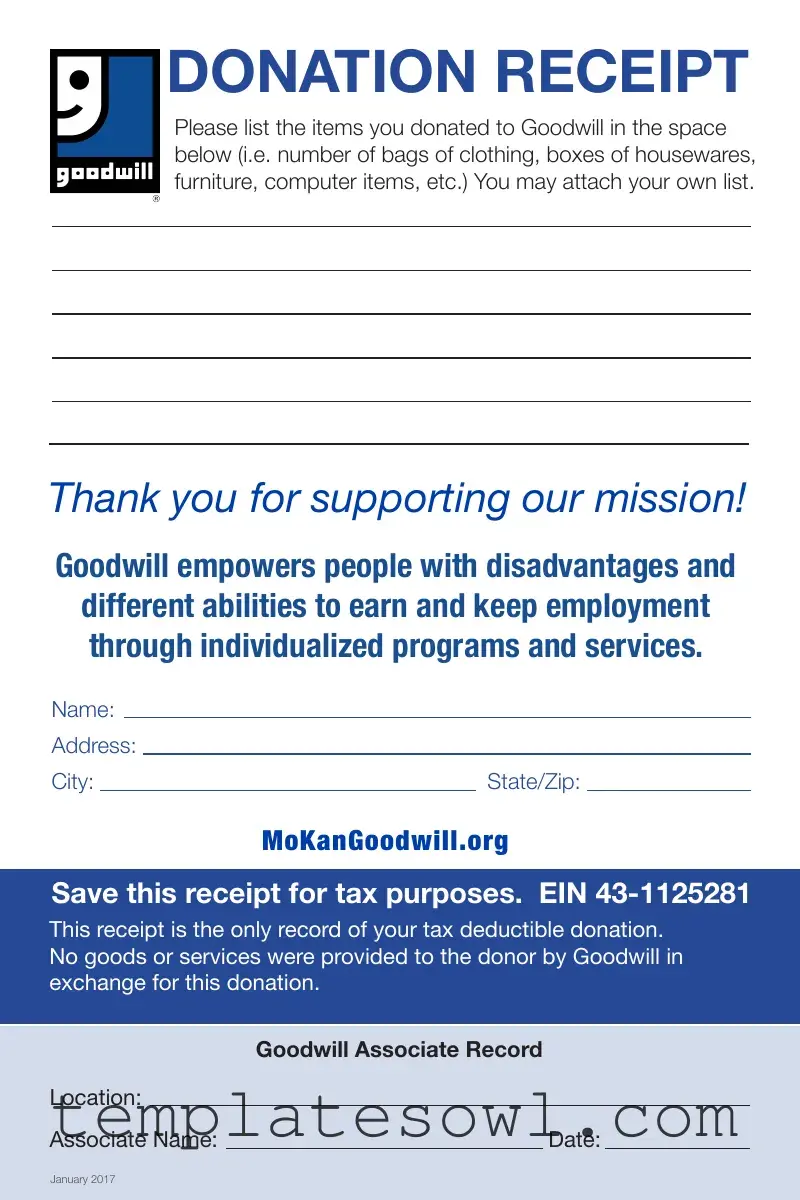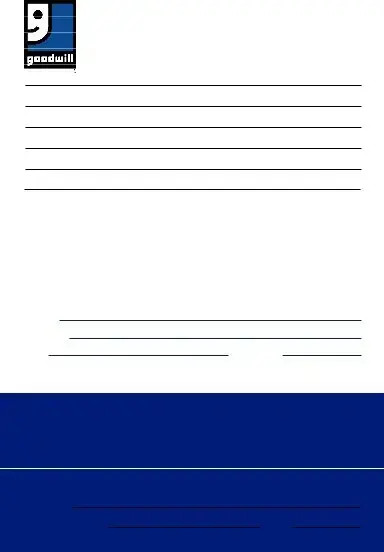What is the For Goodwill Donated Goods form?
The For Goodwill Donated Goods form is a receipt that acknowledges your contribution of gently used items to Goodwill. This form serves as a record for tax purposes, helping you claim a deduction on your tax return. It details the items you’ve donated, such as clothing, furniture, and other household goods.
How should I fill out the donation receipt?
When filling out the receipt, clearly list all the items you are donating. You can specify the number of bags or boxes, as well as individual items. For example, you might write “3 bags of clothing, 2 boxes of housewares, and 1 piece of furniture.” If you prefer, you can attach an additional detailed list of your donated items.
Why should I save this receipt?
It’s important to keep this receipt because it is your only official record of the tax-deductible donation. The IRS requires documentation for charitable contributions to claim deductions, and the For Goodwill Donated Goods form provides the necessary proof.
Can I donate anything I want?
While many items can be donated, Goodwill asks for donations of gently used items in good condition. This typically includes clothing, household goods, furniture, and more. However, items that are broken, damaged, or hazardous cannot be accepted, as they do not meet their donation guidelines.
What does Goodwill do with my donations?
Your donations go a long way. Goodwill will sell high-quality items in their thrift stores or online. They also have an Outlet location where unsold items are sold by the pound. Any items that remain unsold are recycled or salvaged, ensuring minimal waste. Ultimately, your contributions support job training and placement programs for local job seekers.
How does my donation help the community?
By donating to Goodwill, you’re directly impacting individuals in your community. Every dollar spent by Goodwill is reinvested into programs that help people with disadvantages or varying abilities gain employment. When these individuals thrive, it benefits families and strengthens the entire community.
Who do I contact if I have more questions about my donation?
If you have additional questions or need assistance, you can visit MoKanGoodwill.org or reach out to your local Goodwill location. They can provide more information about the donation process, answer inquiries about specific items, and help you with any other concerns regarding your contribution.


